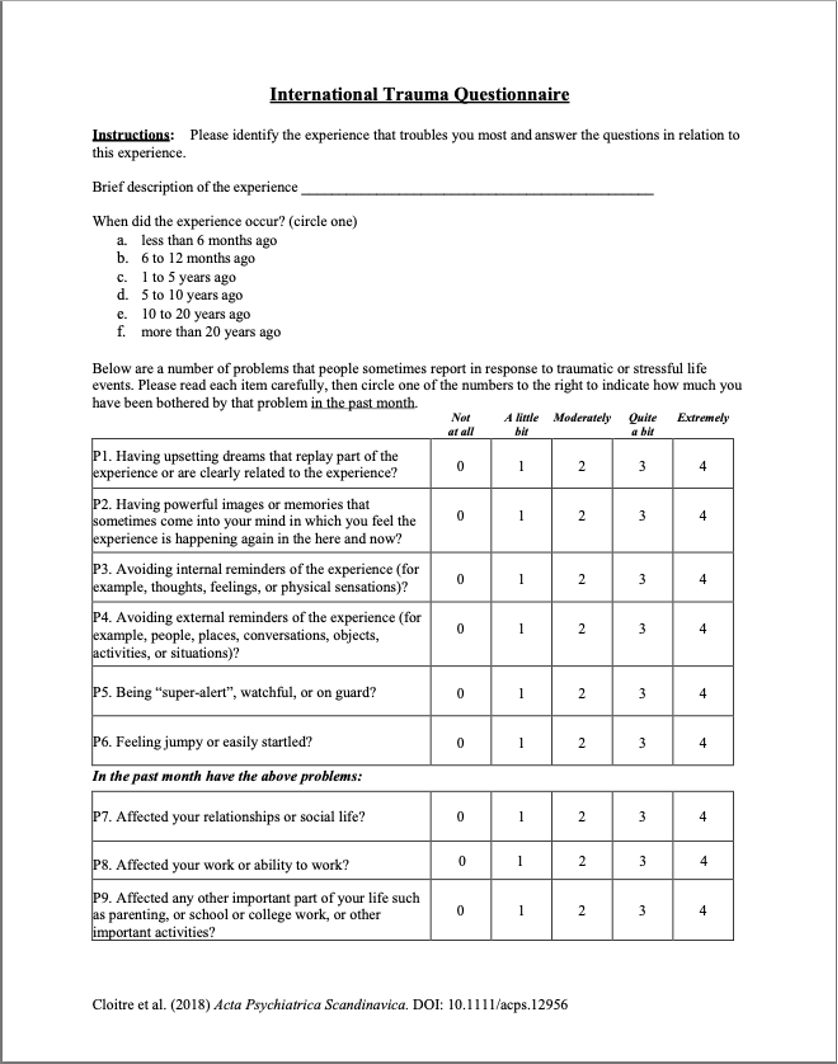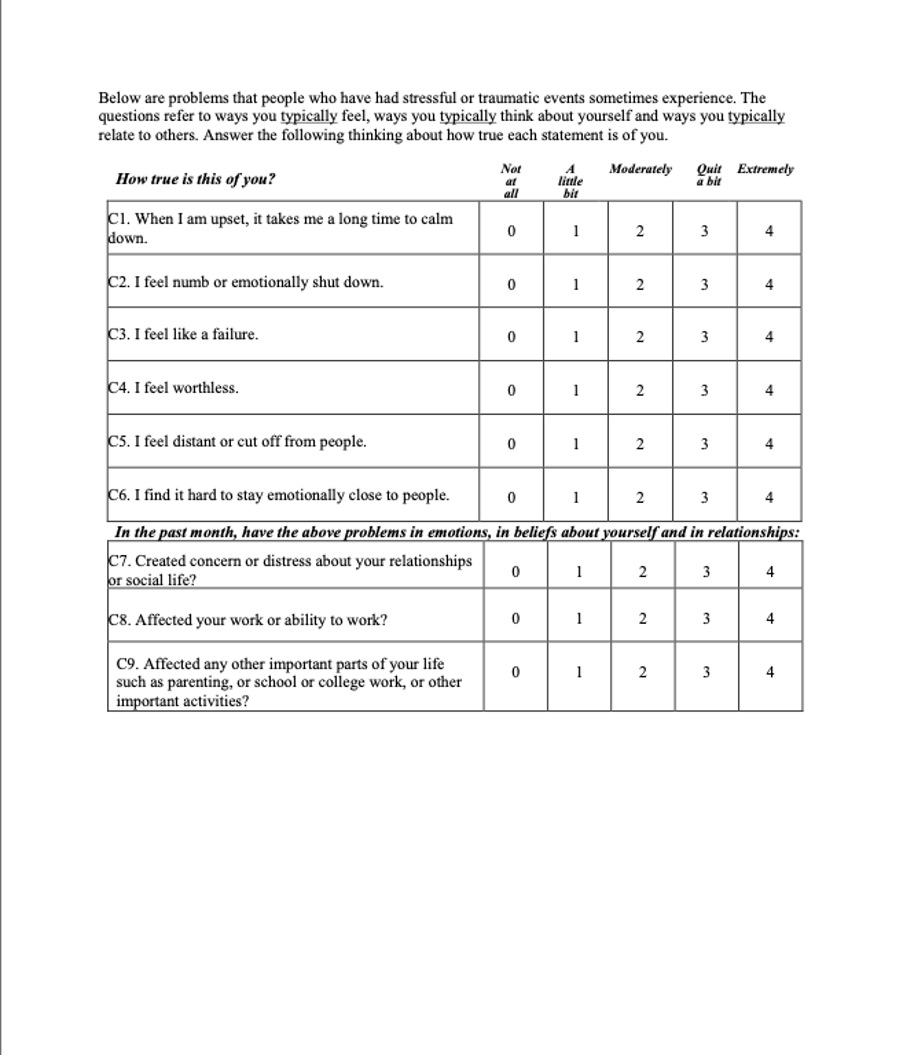Scoring the International Trauma Questionaire (ITQ)
The International Trauma Questionnaire is a brief, simply worded measure focusing on the core features of Post-Traumatic Stress Disorder (PTSD) and Complex Post Traumatic Stress Disorder (c-PTSD).
a) Introduction to scoring the International Trauma Questionnaire
It is important to note that this tool can also be used as a diagnostic tool to identify and distinguish PTSD and complex PTSD. In this section we will focus only on how to use the scoring from this tool as part of your ongoing monitoring and evaluation.
In the ITQ tool, scores are grouped into PTSD and DSO (disturbances in self-organisation) symptom clusters.
PTSD
- Re-experiencing in the here and now score (Re)
- Avoidance score (Av)
- Sense of current threat (Th)
Functional impairment is also assessed
DSO
- Affective dysregulation (AD)
- Negative self-concept (NSC)
- Disturbances in relationships (DR)
Functional impairment is also assessed
Click to enlarge
b) Scoring Range
The scoring range of the ITQ is between 0 and 4 (not at all to extremely), with 4 being the highest level of severity.
The survivor considers each statement and how often they have felt like this over the past month. They are asked to then tick the box which corresponds most closely to their experience, using the categories at the top of each column from Not at all to Extremely.
c) How to calculate total clinical scores
In the ITQ tool, scores are grouped into PTSD and DSO (disturbances in self-organisation) symptom clusters and summed to produce overall PTSD and DSO scores. These should be calculated before and after treatment.
PTSD
P1 and P2 = Re-experiencing in the here and now score (Re)
P3 and P4 = Avoidance score (Av)
P5 and P6 = Sense of current threat (Th)
PTSD score = Sum of Re, Av, and Th
DSO
C1 and C2 = Affective dysregulation (AD)
C3 and C4 = Negative self-concept (NSC)
C5 and C6 = Disturbances in relationships (DR)
DSO score = Sum of AD, NSC, and DR
Each score is presented as a raw score and a scaled score. The scaled scores are between 0 and 10 and are calculated by dividing the raw score by the maximum possible score, times 10. The scaled scores are useful for comparison between symptom clusters as they are all scored out of 10.
d) To calculate functional impairment scores
PTSD functional impairment scores
P7, P8 and P9 scores are summed to produce an overall PTSD functional impairment score
DSO functional impairment scores
C7, C8 and C9 scores are summed to produce an overall DSO functional impairment score
These can be mapped at the beginning and end of treatment to demonstrate the outcome of therapy.
e) What do the scores mean?
Scores measured pre and post treatment (and sometimes mid treatment) are used to demonstrate responsiveness to treatment. Symptom reduction indicates treatment effectiveness.
f) How do you know if the change is due to trauma treatment or change?
In comparison to the CORE tools, there is less published evidence around the use of the ITQ to evaluate the effectiveness of treatment over time.
Further reading on this topic see Cloitre et al 2021.
g) How to handle missing data
As with other tools, it is important to try to ensure that the questionnaire is fully completed. As the ITQ is relatively short this should be easier to do.
Previous
Scoring the CORE-10 measure
Next
Scoring the WSAS scale

